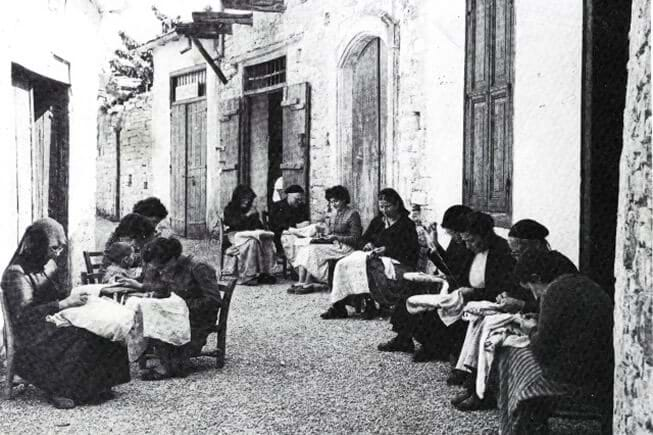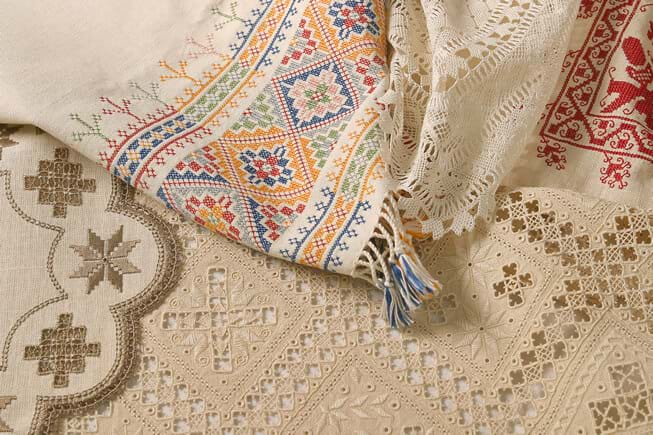The village of Lefkara has been renowned for centuries for its tradition of lace-making. Historians believe that the practice began in the era of Venetian rule over the island. The lace-making style known as lefkaritika combines local craft techniques, Greek and Byzantine pattern-making, and embroidery methods learned from aristocratic Venetian women who spent holidays in the village. Legend has it that Leonardo da Vinci visited Lefkara in the fifteenth century and bought a lace altar cloth for the cathedral in Milan (on the 600th anniversary of the cathedral, the village provided a replacement for the frayed cloth). Some even suggest that the tablecloth in Da Vinci’s ‘The Last Supper’ is modelled on lefkaritika. During the nineteenth century, the men of the village became merchants of the craft, introducing it to customers throughout the Middle East and Europe. The lace is made in a single-thread method and is typically white or beige. Key techniques include hemstitching, cutwork, satin stitching, and needlepoint edging. The lace is used for table cloths and napkins and is a traditional wedding gift. Lace-making is a communal activity for the women of this cobble-stoned village. They begin as young girls to learn the basics. As they develop their abilities, the women can be quite competitive—they try to outdo their companions with innovative patterns and designs. Take a day trip to the village and you will find workshops as well as the Lefkara Handicraft Centre and the Museum of Traditional Embroidery and Silversmithing.

